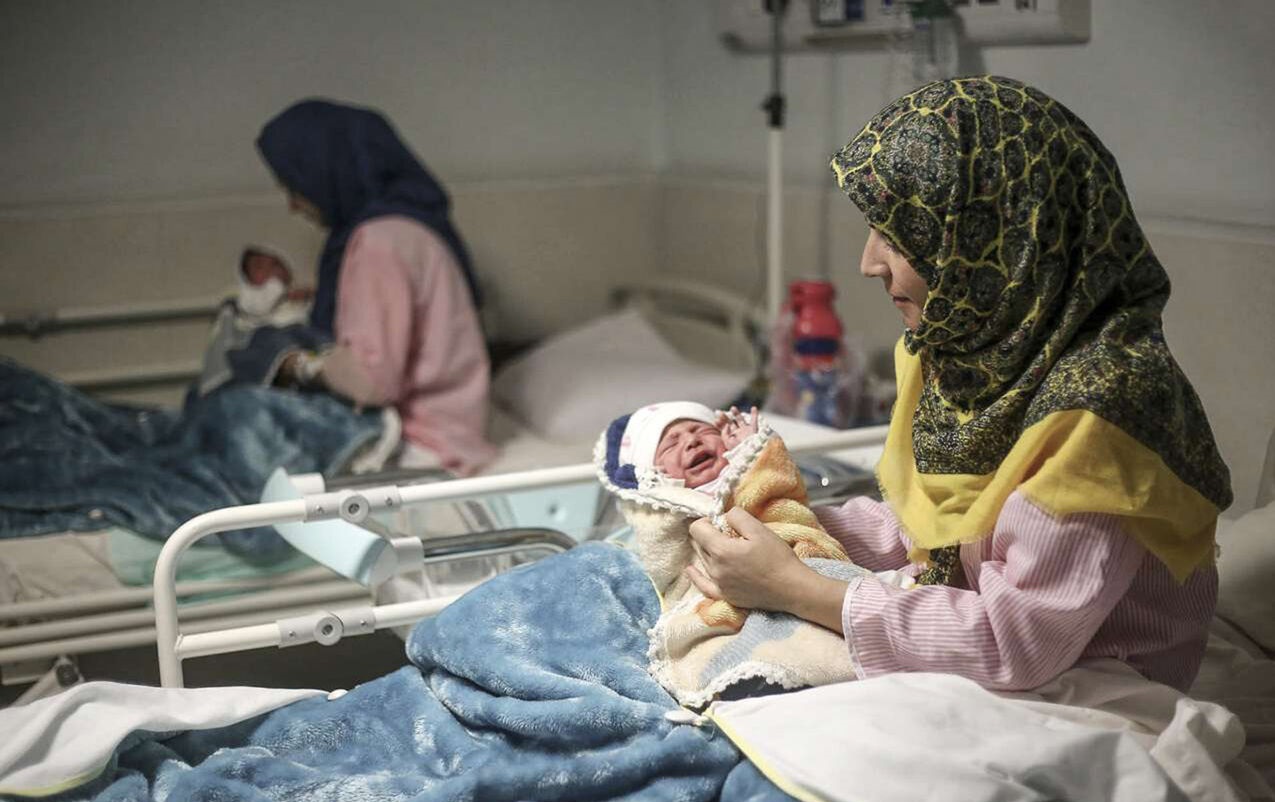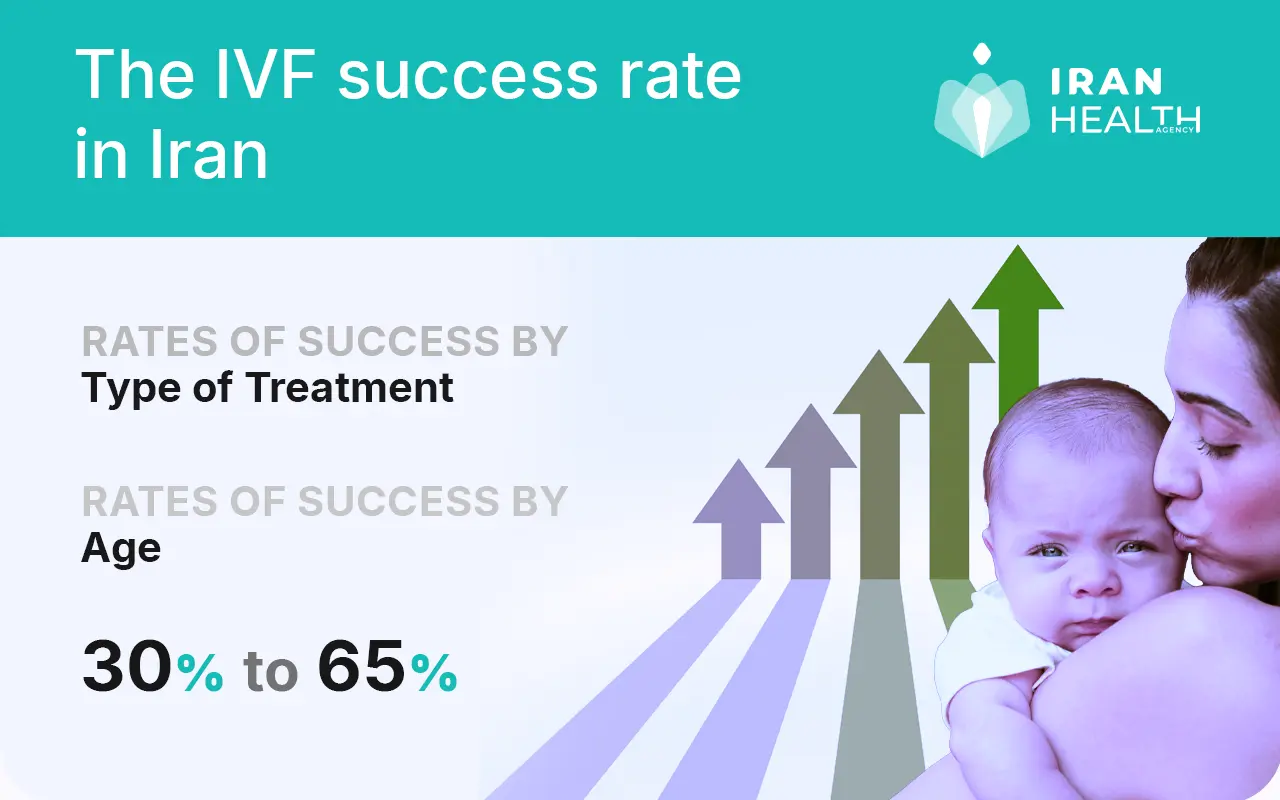The way populations grow and change can tell us a lot about a place, and right now, there's a lot of talk about shifts in the number of births in various parts of the world. One area where these changes are observed, and often discussed, is Iran. It seems like the patterns of families having children are always in motion, and what drives these shifts is a topic that really gets people thinking. This isn't just about numbers; it's about lives, choices, and what the future might hold for a society.
When we consider how many children are born, there are, you know, many different things that play a part. From individual experiences with trying to start a family to broader health considerations, the picture is quite rich. Sometimes, people face personal concerns about having children, and these individual situations, when added up, can certainly influence the bigger picture of a nation's birth trends. It’s a bit like a mosaic, where each small piece contributes to the overall design.
So, what exactly shapes these trends? We can look at things from the very personal side of fertility, like what helps people conceive, to how medical support plays a role. We will also touch on some common ideas about having children that might not always be accurate, and even how health challenges can make a difference. It’s about getting a clearer picture of all the elements that factor into the fertility rate in Iran, and perhaps, in other places too.
Table of Contents
- What Shapes the Fertility Rate in Iran?
- Are Fertility Concerns Common in Iran?
- How Can Individuals Support Their Fertility?
- What About Medical Support for Fertility?
- Debunking Common Beliefs About Fertility
- Health Considerations and Fertility
- The Emotional Side of Trying to Conceive
- Looking at Options for Future Hope
What Shapes the Fertility Rate in Iran?
When we think about a nation's fertility rate, it's really about how many babies are born for every woman of childbearing age. This number isn't just, you know, something that stays the same; it can go up or down based on a whole bunch of factors. These factors can be very personal, like individual health or life choices, but they can also be much bigger, like how society is set up or what kind of support is available. It's a complex picture, really, and understanding it means looking at many different angles.
For instance, the decision to have children, or how many, is influenced by so many things. People consider their economic situation, their access to education, and even cultural expectations. In a place like Iran, these broad societal currents, combined with individual circumstances, definitely play a significant part in shaping the overall fertility picture. It’s like a big puzzle, where each piece fits together to show the full image of the fertility rate in Iran.
Sometimes, people might think that a fertility rate is just a straightforward statistic, but it's actually a reflection of countless individual stories and collective experiences. It's about how health services are structured, how families are supported, and the general well-being of the population. All these elements, in some respects, come together to give us the current state of affairs regarding the fertility rate in Iran.
Understanding the Basics of Fertility Rate in Iran
To grasp the concept of the fertility rate in Iran, it helps to consider the very basic biological processes involved in becoming pregnant. It's a delicate and, you know, rather intricate dance of biological steps that need to align just right. When these processes face difficulties, it can impact an individual's ability to conceive. These individual challenges, when multiplied across a large population, naturally contribute to the broader fertility numbers.
For example, sometimes, discussions about pregnancy might include topics like an ectopic pregnancy, which is when a fertilized egg grows outside the main cavity of the womb. Learning about such specific health considerations, and how they might affect someone's future ability to have children, is part of a wider conversation about reproductive health. This kind of information, when widely available, can help people make informed choices and seek support, which in turn could influence the overall fertility rate in Iran.
It’s important to remember that the biological aspect is just one piece of the puzzle. There are also social factors, personal choices, and access to care that all weave together to form the complete picture of the fertility rate in Iran. So, while the biology is fundamental, it exists within a larger context of human lives and societal structures.
Are Fertility Concerns Common in Iran?
It turns out that facing challenges with having children is something many people experience, and this is true in many places, including Iran. It's not, you know, an isolated issue that only affects a few. When we talk about fertility issues, we are referring to a situation where a couple has difficulty conceiving after a certain period of trying. This can be a very personal and often quiet struggle for those involved.
Because these issues are relatively common, it means that a significant number of individuals and couples might be dealing with them at any given time. This widespread nature of fertility concerns means that they can, in fact, have an impact on the overall fertility rate in Iran. If a good portion of the population is finding it hard to conceive, it stands to reason that the birth rate might reflect that.
The reality is that sometimes people need a bit of help or guidance when trying to start a family. Knowing that these concerns are not unusual can help people feel less alone and more willing to seek advice. It's about recognizing a shared human experience that, you know, affects many, and understanding how it connects to the bigger picture of the fertility rate in Iran.
Addressing Individual Fertility Concerns and the Fertility Rate in Iran
When someone has worries about their ability to have children, getting in touch with a health care team is a really important step. They can discuss any concerns, perhaps look at test results, and figure out what might be going on. This kind of personal attention and medical advice is, actually, a crucial part of supporting individuals through what can be a very sensitive time.
The availability and accessibility of such health care services can have a ripple effect on the fertility rate in Iran. If people feel comfortable and able to seek help when they have concerns, it means more individuals might get the support they need to conceive. This proactive approach, where people are encouraged to talk about their fertility, can make a difference in the lives of many.
It's also about creating a space where these conversations can happen openly. For example, some online communities or support groups might include notes like "child/pregnancy mentioned" or "siggy warning" to create a safe place for discussion. While this specific phrasing might be for a particular forum, the underlying idea of providing a supportive environment for those with fertility concerns is, you know, generally helpful for everyone, and could indirectly influence the fertility rate in Iran by making it easier for people to get information and help.
How Can Individuals Support Their Fertility?
Many people wonder what they can do on their own to improve their chances of having children. There are, for instance, a few general tips that often come up for both men and women. These usually involve making choices that support overall well-being, because a healthy body is, you know, more likely to be a body that can conceive. It's about creating the best possible conditions.
Simple things like eating a balanced diet, getting regular physical activity, and trying to manage stress can play a part. Avoiding certain habits, like smoking or excessive alcohol consumption, is also often recommended. These are, basically, common-sense health practices that benefit the whole body, including the reproductive system. When more individuals adopt these healthy ways of living, it could, in a way, have a positive influence on the fertility rate in Iran.
It’s not about magic solutions, but rather consistent, sensible steps. Sometimes, the journey to conception can feel like it takes forever, and during that time, maintaining a healthy lifestyle can provide a sense of agency and contribute to feeling better generally. These personal efforts, when widespread, can collectively contribute to the broader picture of the fertility rate in Iran.
Practical Steps for Improving Fertility and the Fertility Rate in Iran
Beyond general well-being, there are more specific actions individuals can take to try and improve their chances of conceiving. For women, this might involve tracking their cycle to understand their most fertile times. For men, it could be about ensuring good general health that supports sperm quality. These are, you know, practical steps that focus directly on the reproductive process.
Sometimes, just having accurate information can make a big difference. There's a lot of advice out there about what to do when trying to get pregnant, and knowing which advice is reliable is important. This is where, arguably, good public health communication can play a role in helping people understand what genuinely helps. When people have good information, they can make better choices for their reproductive health.
The cumulative effect of many individuals taking these practical steps can, in fact, contribute to shifts in the fertility rate in Iran. If more people are equipped with knowledge and encouraged to adopt practices that support conception, it stands to reason that the overall number of births might be affected. It's a bit like many small streams feeding into a larger river.
What About Medical Support for Fertility?
For some couples, personal efforts are not quite enough, and they might need medical help to conceive. This is where a field called reproductive endocrinology, or fertility treatment, comes into play. It's a specialized area of medicine that focuses on providing care for couples who need assistance having a child. These treatments can range from simpler interventions to more involved procedures.
Access to these kinds of treatments can vary, but where they are available, they offer a path forward for many who might otherwise struggle. The presence and quality of such services can, you know, have a noticeable impact on a country's fertility rate. If more people can access effective treatments, it means more successful pregnancies, which would naturally influence the fertility rate in Iran.
These medical advancements represent hope for many individuals and families. They show that even when the natural processes are difficult, there are often ways that medical science can lend a hand. This support system is, frankly, a key part of the modern approach to family planning and population trends.
Modern Treatments and the Fertility Rate in Iran
Modern fertility treatments involve a variety of methods, each designed to address different challenges in conceiving. These can include things like medication to help with ovulation, or more complex procedures that assist with fertilization outside the body. The goal is always to help the couple achieve a pregnancy when natural conception has proven difficult.
The availability of these options means that individuals and couples who might have once had no hope now have avenues to explore. For instance, learning about these treatment choices can provide real hope for those facing difficulties. The extent to which these modern treatments are available and affordable can, in fact, shape the broader picture of the fertility rate in Iran.
It's a constantly evolving field, with new methods and understandings emerging over time. The integration of these medical supports into the healthcare system can be a very important factor in supporting families and, by extension, influencing the overall fertility rate in Iran. It’s about offering solutions where they are most needed.
Debunking Common Beliefs About Fertility
It seems like there is an endless amount of advice floating around about what to do when you’re trying to get pregnant. Some of this advice is helpful, but some of it is, you know, not quite accurate. There are many common ideas about fertility that are actually myths, and separating the facts from these misconceptions is really important.
For example, some people might believe certain old wives' tales about conception that simply aren't supported by science. These kinds of mistaken beliefs can sometimes lead to unnecessary stress or even prevent people from seeking proper medical advice when they need it. It’s about, basically, getting to the truth of what helps and what doesn't.
Understanding and debunking these common myths can empower individuals to make more informed decisions about their reproductive health. When a population has clearer information, it can lead to more effective personal strategies for conception, which could, in turn, subtly influence the fertility rate in Iran. It's about building knowledge.
Separating Fact from Fiction Regarding the Fertility Rate in Iran
When it comes to something as personal as having children, stories and anecdotal evidence can spread easily. However, relying on information that isn't accurate can be counterproductive. Topics like the best time to try, what foods to eat, or even how stress affects fertility are often surrounded by misconceptions. Learning about common fertility myths and debunking them is, you know, a valuable step for anyone trying to conceive.
Public awareness campaigns or accessible educational materials that clarify these points can be very helpful. When people understand what genuinely impacts their ability to have children, they can focus their efforts more effectively. This widespread clarity about fertility can, arguably, contribute to the overall picture of the fertility rate in Iran by guiding individuals towards practices that are truly beneficial.
It’s about making sure that the advice people receive is based on solid understanding, rather than hearsay. This shift towards evidence-based information can lead to better outcomes for individuals and, consequently, have a broader effect on the fertility rate in Iran. It's about empowering people with accurate knowledge.
Health Considerations and Fertility
Our general health plays a very big part in our ability to have children. Sometimes, certain medical conditions or treatments can affect fertility. For example, learning about fertility considerations in cancer treatment is a really important area. Some cancer treatments can, unfortunately, impact a person's reproductive system.
Understanding how different illnesses or medical interventions might affect fertility is crucial for both patients and healthcare providers. It allows for discussions about preserving fertility before treatment begins, offering options that can provide hope for future family building. This awareness is, you know, a vital piece of the puzzle.
When these health considerations are widely understood and addressed within a healthcare system, it can certainly influence the fertility rate in Iran. Providing options for fertility preservation means that more people might still be able to have children, even after facing serious health challenges. It’s about looking out for long-term well-being.
Illnesses, Treatments, and the Fertility Rate in Iran
Certain cancers, for instance, and their treatments, can sometimes pose a risk to a person's ability to have children later on. Learning about the specific cancers with higher chances of affecting fertility is important for those who might be facing such diagnoses. This knowledge allows for conversations about how to protect fertility before, during, or after treatment.
The availability of options for preserving fertility, such as freezing eggs or sperm, can offer a great deal of reassurance to people undergoing medical treatments that might otherwise make conception difficult. These preservation options can, you know, genuinely provide hope for many individuals who dream of having a family in the future.
When these kinds of services are accessible and discussed openly, it means that the impact of illness on the fertility rate in Iran can be somewhat lessened. It’s about providing pathways for people to still achieve their family goals, even when health challenges arise. This proactive approach to health and fertility is, basically, a sign of a supportive healthcare system.
The Emotional Side of Trying to Conceive
Trying to have a baby can be an incredibly emotional experience for many couples. For some, the journey to conception can, you know, honestly feel like an eternity, filled with anticipation, hope, and sometimes, disappointment. This emotional aspect is a very real part of the fertility picture, and it’s important not to overlook it.
The stress and emotional strain associated with fertility challenges can be significant. Providing support for the emotional well-being of individuals and couples during this time is just as important as addressing the physical aspects. When people feel supported emotionally, they are better equipped to cope with the process and make informed decisions.
While emotions don't directly change a country's birth rate in a statistical sense, the collective emotional experience of a population regarding family building can certainly influence how people approach having children. A supportive environment for those trying to conceive could, in a way, foster a more positive outlook on family growth, which then might subtly impact the fertility rate in Iran.
Supporting Well-being Amidst Fertility Rate in Iran Discussions
The discussion around the fertility rate in Iran, or any place,
Related Resources:



Detail Author:
- Name : Dayton Weber IV
- Username : katherine.beatty
- Email : wintheiser.malcolm@gmail.com
- Birthdate : 1992-03-28
- Address : 96539 Alessandra Expressway New Tyshawnshire, NY 50908-6604
- Phone : 1-608-965-4945
- Company : Stokes-Cummerata
- Job : Captain
- Bio : Eligendi repellendus nesciunt excepturi reprehenderit eaque accusantium eveniet. Aperiam ab officia exercitationem necessitatibus sint et tenetur esse. Quam aut nam id voluptatem dolores qui.
Socials
instagram:
- url : https://instagram.com/muhammad_real
- username : muhammad_real
- bio : Aspernatur vel quas velit et et. Nisi maiores voluptas perspiciatis.
- followers : 213
- following : 270
tiktok:
- url : https://tiktok.com/@muhammad.schaefer
- username : muhammad.schaefer
- bio : Possimus eligendi architecto debitis voluptate saepe.
- followers : 604
- following : 2402